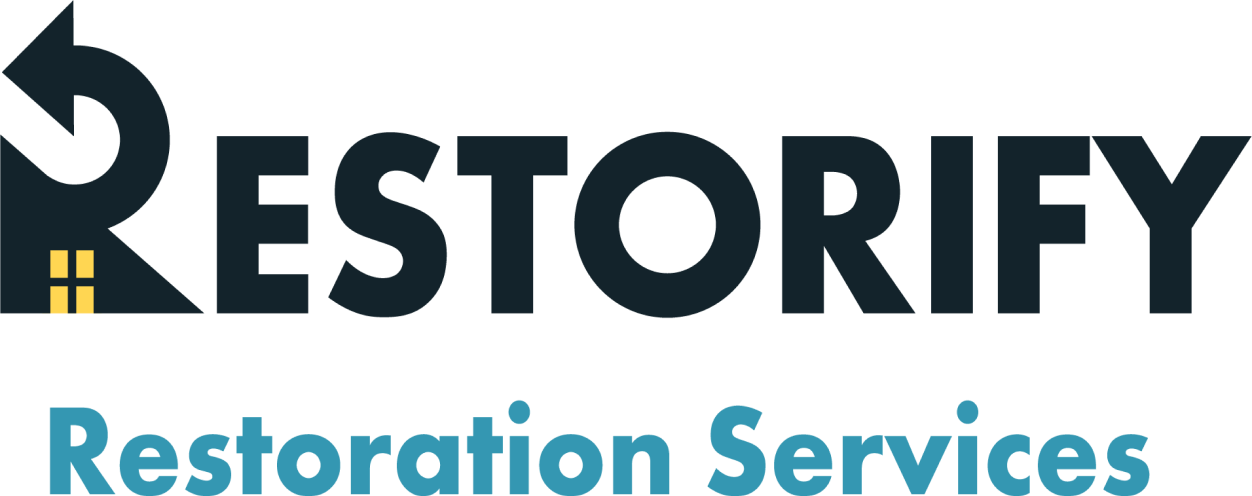Mold is a sneaky invader. It can hide in plain sight—or worse, behind walls, under flooring, or in other unexpected spots. Left unchecked, mold can damage your home and pose serious health risks. At Restorify, we’ve seen firsthand how mold can thrive in hidden places. Knowing where to look is the first step to protecting your home and family.
Why Mold Loves to Hide
Mold thrives in warm, damp, and dark environments. All it needs to grow is moisture, organic material (like wood, drywall, or fabric), and time. Because it doesn’t need sunlight, mold can develop in places you rarely see or think to inspect.
Let’s take a look at the most common places mold hides—and how to find it before it becomes a problem.
1. Behind Walls and Under Flooring
Leaks from plumbing, roofs, or foundation cracks can cause hidden water damage. When moisture gets trapped behind walls or under flooring, it creates the perfect breeding ground for mold.
How to find it:
- Look for bubbling or peeling paint, warped flooring, or a musty smell.
- Use a moisture meter to check dampness in suspicious areas.
- If you suspect hidden mold, a professional inspection is the safest route.
2. In HVAC Systems and Ductwork
Your air conditioner or heating system could be circulating mold spores without you knowing. Mold can grow in drip pans, coils, and ducts—especially if condensation is present.
How to find it:
- Pay attention to musty odors when your HVAC kicks on.
- Have your HVAC system inspected and maintained regularly.
- Ensure proper drainage and replace filters often.
3. Around Windows and Doors
Condensation around windows and doors can lead to mold growth, especially if the seals are damaged or humidity is high (which is common in South Carolina’s climate).
How to find it:
- Check for dark spots or mildew on window sills and around frames.
- Look for cracked or deteriorating caulk or weather stripping.
- Wipe down moisture and repair seals to prevent buildup.
4. Under Sinks and Around Plumbing Fixtures
Leaks or drips under sinks, around toilets, and behind appliances often go unnoticed until mold has taken hold.
How to find it:
- Routinely inspect under sinks and behind toilets.
- Look for signs of water damage or discoloration.
- Repair leaks promptly and keep these areas dry.
5. In Crawl Spaces
Many homes in South Carolina have crawl spaces rather than basements. These areas are prone to moisture from the ground, poor ventilation, and even standing water—making them a common source of mold growth.
How to find it:
- Check for musty odors or visible mold on wood or insulation.
- Use a flashlight to inspect for dampness or mold spots.
- Consider encapsulation and dehumidifiers to control moisture.
6. Inside Attics
Roof leaks or poor ventilation can cause mold to grow in attics. Insulation and wooden beams are common hosts for hidden mold.
How to find it:
- Look for signs of roof leaks or discoloration on wood.
- Ensure your attic is properly ventilated and insulated.
- Schedule regular roof inspections.
7. Behind or Beneath Appliances
Appliances like refrigerators, dishwashers, washing machines, and water heaters can leak or produce condensation, which leads to hidden mold growth.
How to find it:
- Move appliances periodically and inspect the walls and flooring behind or beneath them.
- Check for standing water, rust, or mold stains.
- Keep drip pans and hoses clean and in good condition.
What to Do If You Find Mold
If you spot mold or suspect it’s hiding in your home, don’t ignore it. Mold spreads quickly and can affect indoor air quality and your health.
At Restorify, we specialize in thorough mold inspections and professional remediation. Our team uses advanced tools to detect hidden mold and eliminate it at the source—safely and effectively.
Schedule a Mold Inspection with Restorify
Think you might have hidden mold in your home? Let us help you breathe easier. Contact Restorify today for a professional mold inspection and peace of mind. We proudly serve homeowners throughout Charleston, Mount Pleasant, Summerville, and surrounding South Carolina communities.



